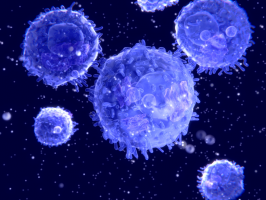
Researchers at Peking Union Medical College Hospital have mapped out why pairing two well-known cancer drugs can turn “sleepy” immune cells back into tumour killers.
In a new Perspective published today, they trace the story behind the newest lab-designed proteins: one end releases the brake called PD-1 on T cells, while the other end gently hands the same cells a safer, souped-up version of the growth signal interleukin-2 (IL-2).
Immune checkpoint inhibitors like programmed death-1 (PD-1) blockade have transformed cancer care, but their effectiveness as a standalone therapy is limited.
A key issue is that high PD-1 expression is linked to the terminal differentiation and exhaustion of immune cells, particularly T cells, creating a contradiction that reduces treatment efficacy and response rates.
IL-2, a critical immune-regulating cytokine, was one of the earliest approved cancer immunotherapies.
However, its wide-ranging and complex effects have held back its full potential.
Recent research, as highlighted in the review, shows that combining PD-1 blockade with IL-2 can work synergistically.
This combination eases T cell exhaustion and boosts the cells' ability to fight tumours, leading to better treatment outcomes.
Building on this discovery, scientists have developed bi-functional molecules.
These innovative substances can simultaneously block PD-1 and deliver IL-2 or its engineered variants directly to target immune cells.
The review catalogues all nine PD-1/IL-2 bi-functional agents now in clinical trials, mapping the field from IL-2Rbg -biassed/IL-2Ra-biassed designs to non-blocking PD-1 antibodies and the masked pro-drug design, details the mechanisms behind these bi-functional molecules, their potential in cancer treatment, and how they could drive future innovations in immunotherapy.
Found in the journal, Science Bulletin.
Source: Science China Press
We are an independent charity and are not backed by a large company or society. We raise every penny ourselves to improve the standards of cancer care through education. You can help us continue our work to address inequalities in cancer care by making a donation.
Any donation, however small, contributes directly towards the costs of creating and sharing free oncology education.
Together we can get better outcomes for patients by tackling global inequalities in access to the results of cancer research.
Thank you for your support.